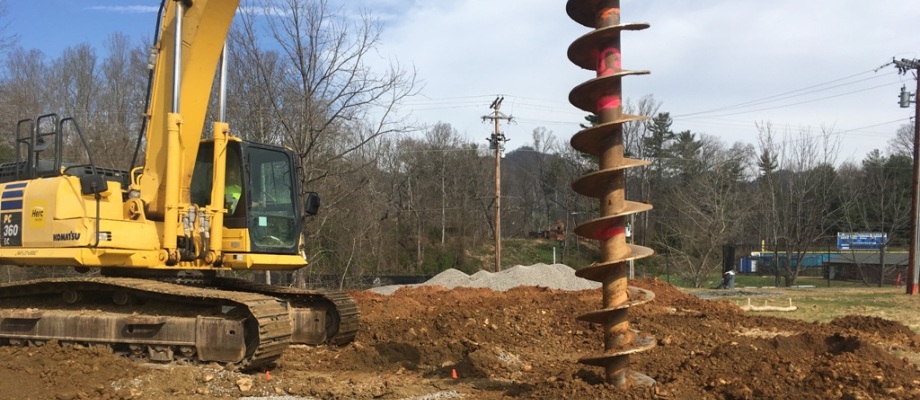Navigating the Intricacies of Geotechnical Eng Projects
Wiki Article
The Crucial Contributions of Geotechnical Designers in Analyzing Soil Habits and Foundation Layout for Sustainable Infrastructure Growth
Geotechnical designers serve as a keystone in the world of lasting facilities growth, where their experience in evaluating soil behavior directly influences the safety and security and long life of frameworks. By utilizing innovative methods such as Standard Infiltration Examinations and Cone Penetration Screening, they thoroughly examine soil residential properties, leading to informed choices on foundation design.Duty of Geotechnical Designers

In addition to website investigations, geotechnical designers review prospective risks such as dirt liquefaction, incline security, and groundwater issues. They use advanced engineering concepts to establish options that mitigate these risks, making sure that layouts adhere to pertinent codes and standards. Their work commonly involves cooperation with other engineering self-controls, architects, and environmental scientists to create integrated techniques to facilities advancement.
Moreover, geotechnical engineers add to sustainable practices by advertising making use of materials and methods that lessen environmental influence. With their comprehensive understanding of dirt auto mechanics and geology, they play an important function in fostering safe, resilient, and sustainable framework that meets the demands of culture while safeguarding the setting.
Soil Actions Evaluation Techniques
Comprehending dirt habits is fundamental to educated decision-making in geotechnical engineering, as it straight influences the style and building and construction procedures. Various assessment strategies are used to examine dirt homes, making certain precise predictions of its performance under various loading problems.One main technique is the Conventional Infiltration Test (SPT), which supplies insights into soil thickness and consistency with the resistance come across during infiltration. Cone Infiltration Screening (CPT) supplies a continual profile of soil stratification and in-situ stamina parameters, allowing a much more in-depth understanding of subsurface problems.
Research laboratory tests, such as Atterberg restrictions, unconfined compressive stamina, and triaxial tests, are vital for identifying soil behavior under regulated problems. These examinations assist in the decision of critical specifications, consisting of shear leaks in the structure, stamina, and compressibility.

Foundation Style Concepts
Structure layout principles are critical for guaranteeing the security and durability of structures, as they determine how loads are transferred from the superstructure to the underlying dirt. These concepts incorporate numerous factors to consider, including load-bearing capability, negotiation, and side security. A comprehensive understanding of soil technicians is vital for geotechnical designers to evaluate the interaction between the foundation and the dirt.One key concept is the suitable choice of foundation kind, which may consist of superficial structures, such as spread footings, or deep foundations, like piles or caissons, depending upon dirt problems and architectural lots - geo tech engineering. The structure should be created to reduce differential negotiation, which can result in structural damages

Sustainable Framework Practices
How can we efficiently incorporate sustainability into facilities practices? Sustainable framework techniques begin with detailed website analyses, which evaluate soil actions, local environments, and resource schedule.Furthermore, using cutting-edge building techniques, such as utilizing low-impact structures and recycled products, substantially lowers the carbon impact of infrastructure projects. Geotechnical designers play an essential role in selecting suitable products that improve durability and sustainability, such as making use of geo-synthetics to enhance dirt stability and minimize disintegration.
In addition, sustainable facilities methods need recurring monitoring and upkeep to make certain that frameworks continue to be durable over time. Ultimately, these methods not only contribute to the longevity of frameworks yet additionally advertise a much healthier atmosphere, straightening facilities growth with more comprehensive sustainability goals.
Case Researches and Applications
Study in geotechnical design provide important insights into the practical applications of dirt actions and lasting infrastructure practices. One remarkable example is the building of the Burj Khalifa in Dubai, where extensive soil screening and evaluation were conducted to evaluate the unique challenges positioned by the region's loosened sand and high water table. Geotechnical designers employed progressed strategies such as vibrant penetrating and cone penetration screening to identify the dirt's load-bearing ability, inevitably resulting in the layout of a deep structure system that supports this legendary framework.Another essential case is the removal of the San Francisco-Oakland Bay Bridge after the 1989 Loma Prieta earthquake. Geotechnical analyses revealed the requirement for soil stablizing strategies, consisting of grouting and soil nailing, to boost the seismic resilience of the structure. These treatments not only enhanced the bridge's security however additionally added to its long life and sustainability.
Such study exhibit exactly how geotechnical engineers play an essential duty in comprehending soil behavior and applying ingenious options to make certain the architectural honesty and sustainability of infrastructure jobs. geotechnical eng. Their expertise is vital in addressing the facility challenges postured by different dirt conditions across diverse geographic areas
Final Thought
In verdict, the contributions of geotechnical engineers are essential for the assessment of dirt habits and the style of foundations, which are vital for sustainable framework development. Via the application of innovative testing techniques and ingenious materials, these professionals ensure the stability and security of structures while minimizing environmental impacts. The combination of sustainable practices promotes strength in infrastructure projects, highlighting the importance of partnership among stakeholders to achieve effective building remedies that fulfill both ecological and societal demands.Geotechnical engineers offer as a foundation in the realm of lasting infrastructure development, where their experience in analyzing dirt habits straight influences the security and durability of structures.Geotechnical engineers play a crucial function in the style and geotech engineer building and construction of infrastructure by assessing soil and rock actions to make certain stability and safety and security. A comprehensive understanding of dirt auto mechanics is vital for geotechnical designers to examine the communication in between the dirt and the foundation.
Geotechnical analyses disclosed the requirement for dirt stabilization methods, consisting of grouting and dirt nailing, to enhance the seismic resilience of the foundation.In conclusion, the contributions of geotechnical designers are important for the analysis of dirt habits and the design of foundations, which are important for sustainable infrastructure growth.
Report this wiki page